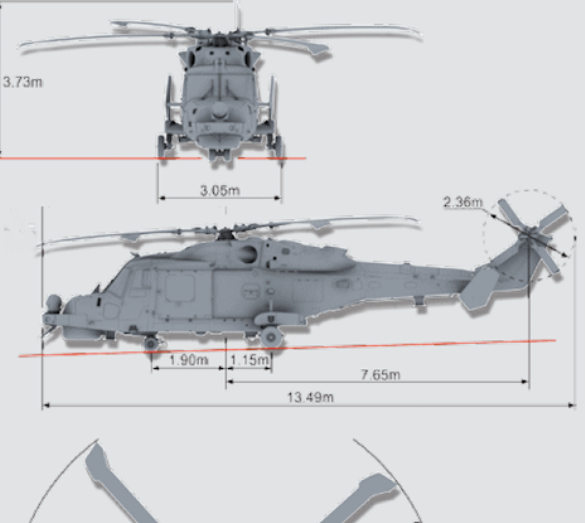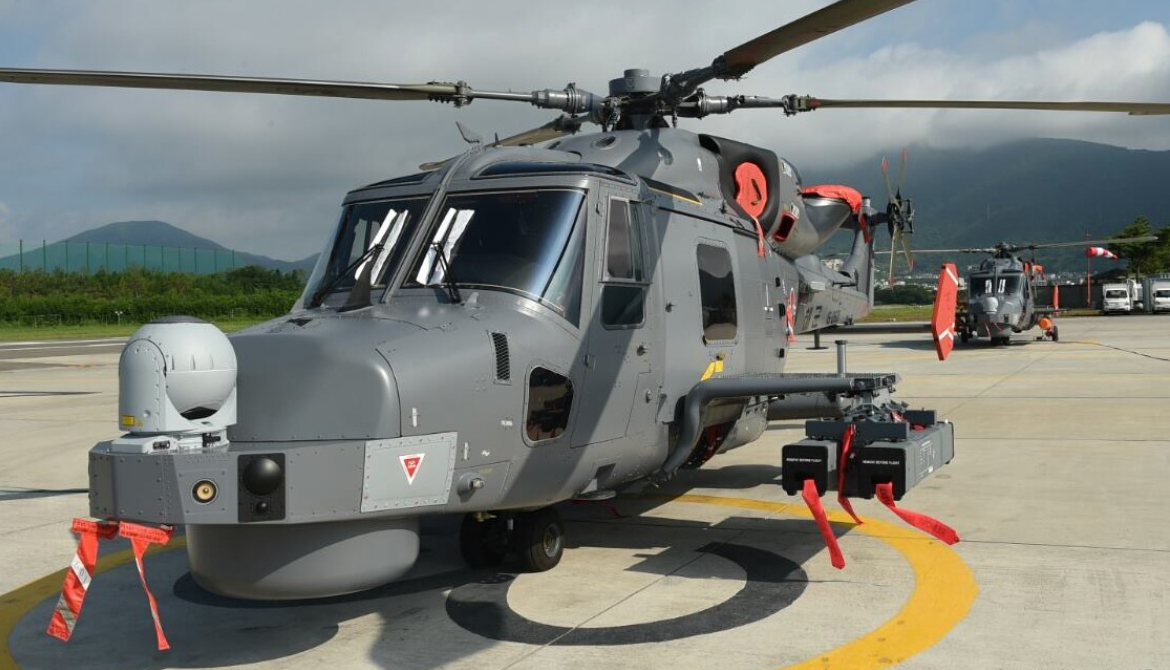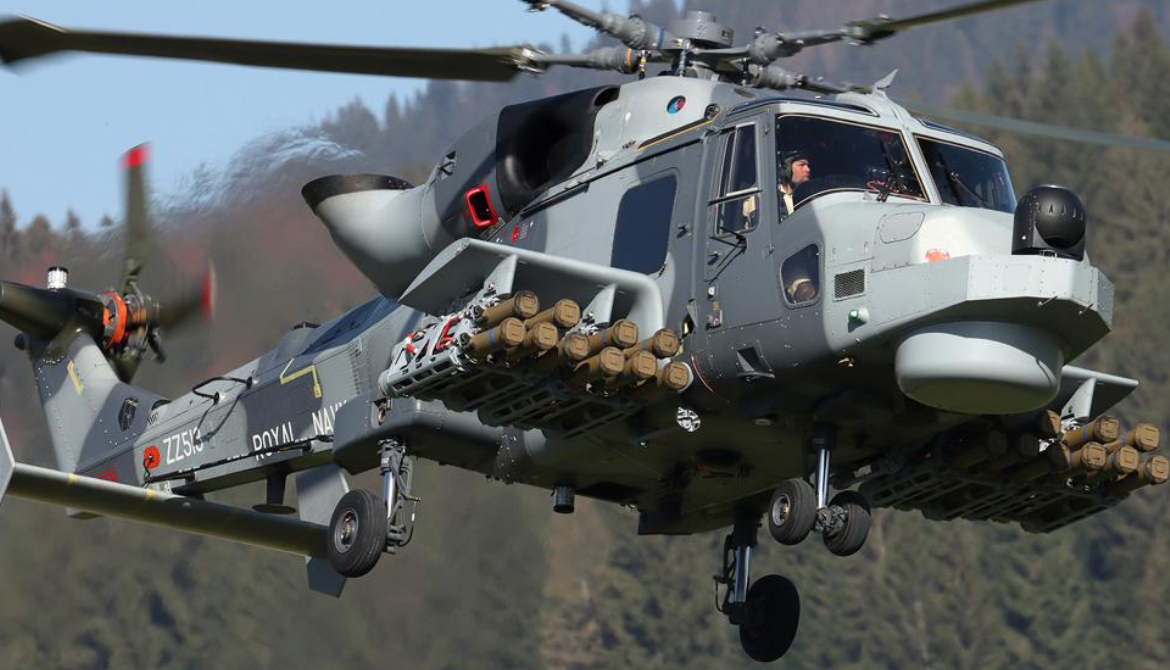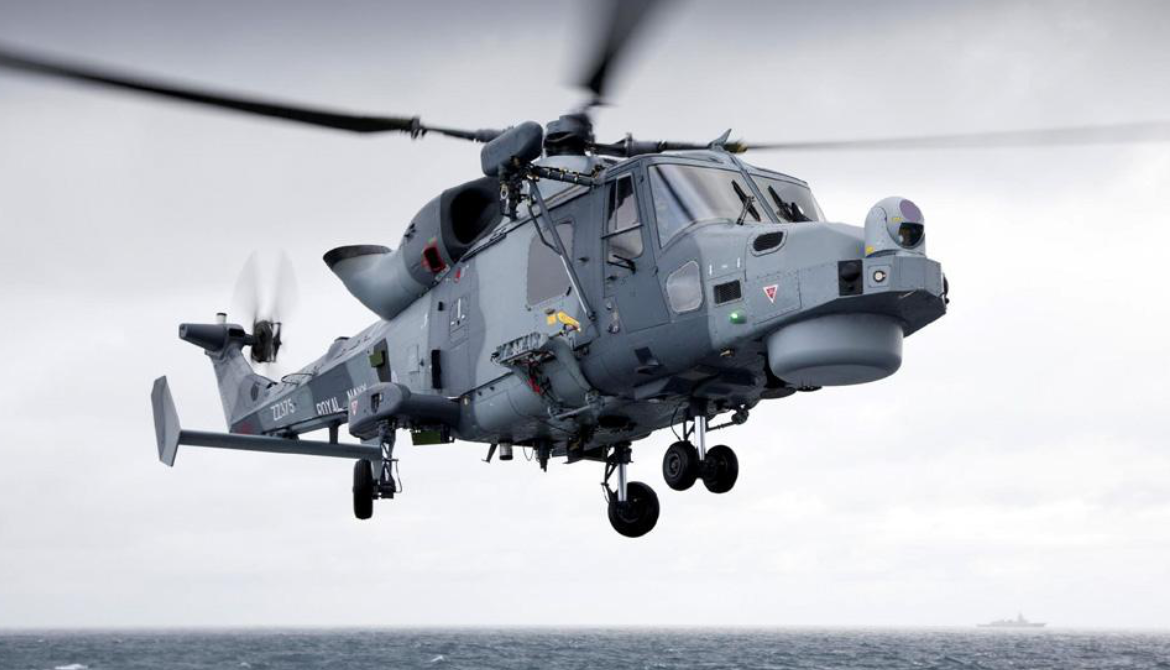AgustaWestland
AW159 Wildcat ASuW
 |
|
| Wildcat HMA2 naval variant in 2013 | |
| Role | Utility, SAR and ASuW helicopter |
|---|---|
| National origin | United Kingdom, Italy |
| Manufacturer | |
| First flight | 12 November 2009 |
| Introduction | 29 August 2014 (AH1) |
| Status | In service |
| Primary users | British Army |
| Produced | 2009–present |
| Developed from | Westland Super Lynx |
.
History AgustaWestland (now Leonardo)
AgustaWestland AW159 AH-1 Wildcat ASuW

The AgustaWestland AW159 Wildcat (previously called the Future Lynx and Lynx Wildcat) is a military helicopter, developed by the British-Italian helicopter manufacturer AgustaWestland, and later marketed by the Italian aerospace company Leonardo. It is an improved version of the Westland Super Lynx designed to serve in the battlefield utility, search and rescue, aerial reconnaissance, anti-submarine warfare (ASW), anti-surface warfare (ASuW), utility, command and control, and troop transport duties.
In 1995, the British Government announced that the Royal Navy's existing Westland Lynx helicopters were to be replaced; at that point, the service was intended to operate an all-Merlin fleet.[7] Despite this stated intent, Westland Helicopters continued to hold talks with the Ministry of Defence (MOD) to find a future role for the type during the late 1990s; the firm issued multiple proposals to either extend the life of the existing Super Lynx through upgrade programmes or more ambitious remanufacturing programmes incorporating varying degrees of new components.[8] In 2002, the Future Lynx project originated in two studies to determine the suitability of a derivative of the Super Lynx 300 to replace the existing Lynx helicopters of the Royal Navy and British Army.
Design

0
KmCeiling
0
MinEndurance
0
Km/hAircraft Speed
0
Max Crew
Photo Gallery
AgustaWestland (now Leonardo)
AgustaWestland AW159 Wildcat ASuW


AgustaWestland (now Leonardo)
AgustaWestland AW159 Wildcat ASuW SAR/utility
General Info
-
-
- Crew: 2 pilots
- Capacity: 6 passengers, including door gunner
- Length: 15.24 m (50 ft 0 in)
- Height: 3.73 m (12 ft 3 in)
- Empty weight: 3,300 kg (7,275 lb)
-
Powerplant
-
- Max takeoff weight: 6,000 kg (13,228 lb)
- Powerplant: 2 × LHTEC CTS800-4N turboshaft, 1,015 kW (1,361 hp) each
- Main rotor diameter: 12.8 m (42 ft 0 in)
- Main rotor area: 128.7 m2 (1,385 sq ft)
-
Performance
- Maximum speed: 311 km/h
- Range: 777 km (483 mi, 420 nmi)
- Ferry range: 963 km
- Endurance: Two hours and 15 minutes (Four hours and 30 minutes with auxiliary fuel tanks)
Related development
-
- Pintle-mounted machine gun, e.g. FN MAG (Army) or Browning M3M (Navy).
- up to 20× Thales Martlet (Lightweight Multirole Missile), formerly Future Anti-Surface Guided Weapon (Light). or
- up to 4× MBDA Sea Venom, formerly Future Anti-Surface Guided Weapon (Heavy), to disable or destroy vessels up to 1000 tonnes (projected for full operating capability in 2026). or
- Sting Ray torpedo and Mk.11 depth charges
Air-to-surface missile systems and ASW weapons (Naval HMA2 variant):
Links to Youtube & Others
The AgustaWestland AW159 Wildcat (previously called the Future Lynx and Lynx Wildcat) is a British military helicopter. It is an improved version of the Westland Super Lynx designed to serve in the battlefield utility, search and rescue and anti-surface warfare roles.
AgustaWestland
AgustaWestland AW159
The Wildcat is a multi-role helicopter operated by Naval Air Squadron 847 (NAS 847) Commando Helicopter Force.
Youtube Link
The Wildcat is a multi-role helicopter operated by Naval Air Squadron 847 (NAS 847) Commando Helicopter Force.










.png)


.png)